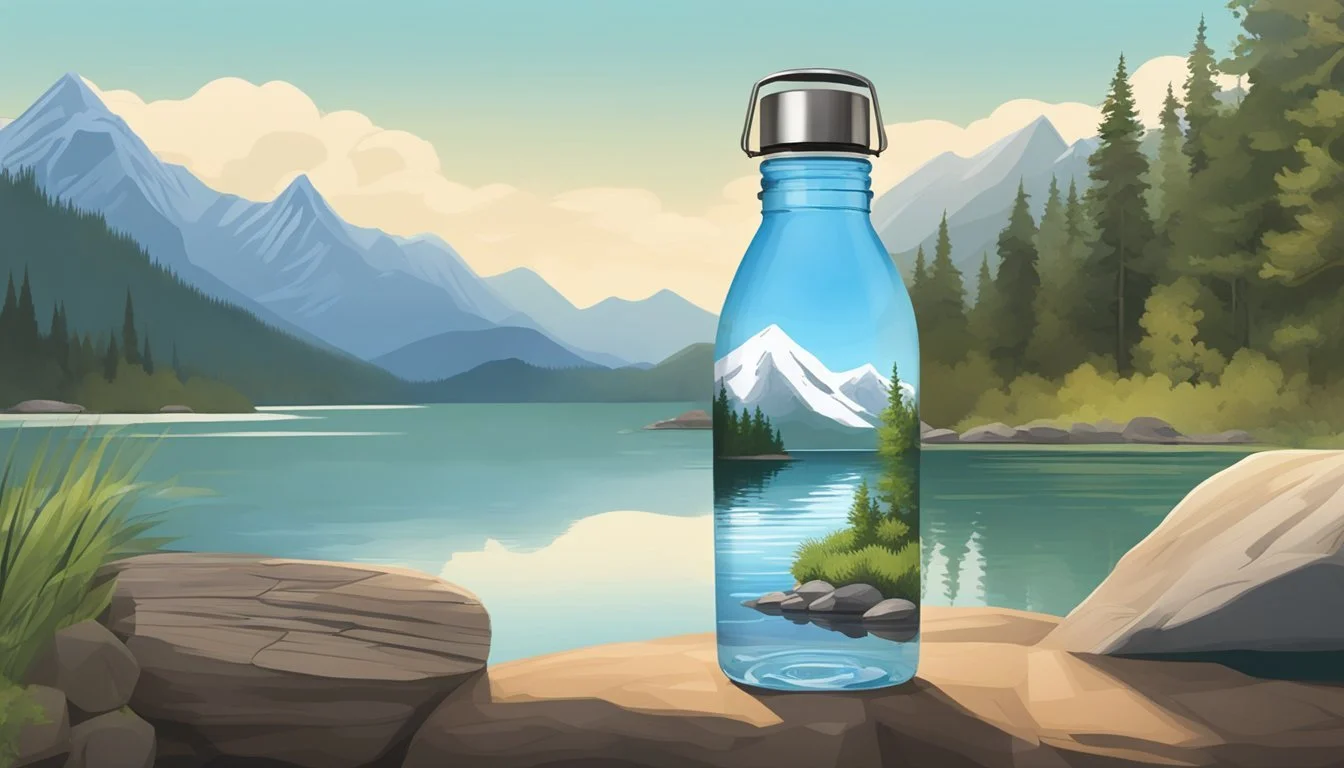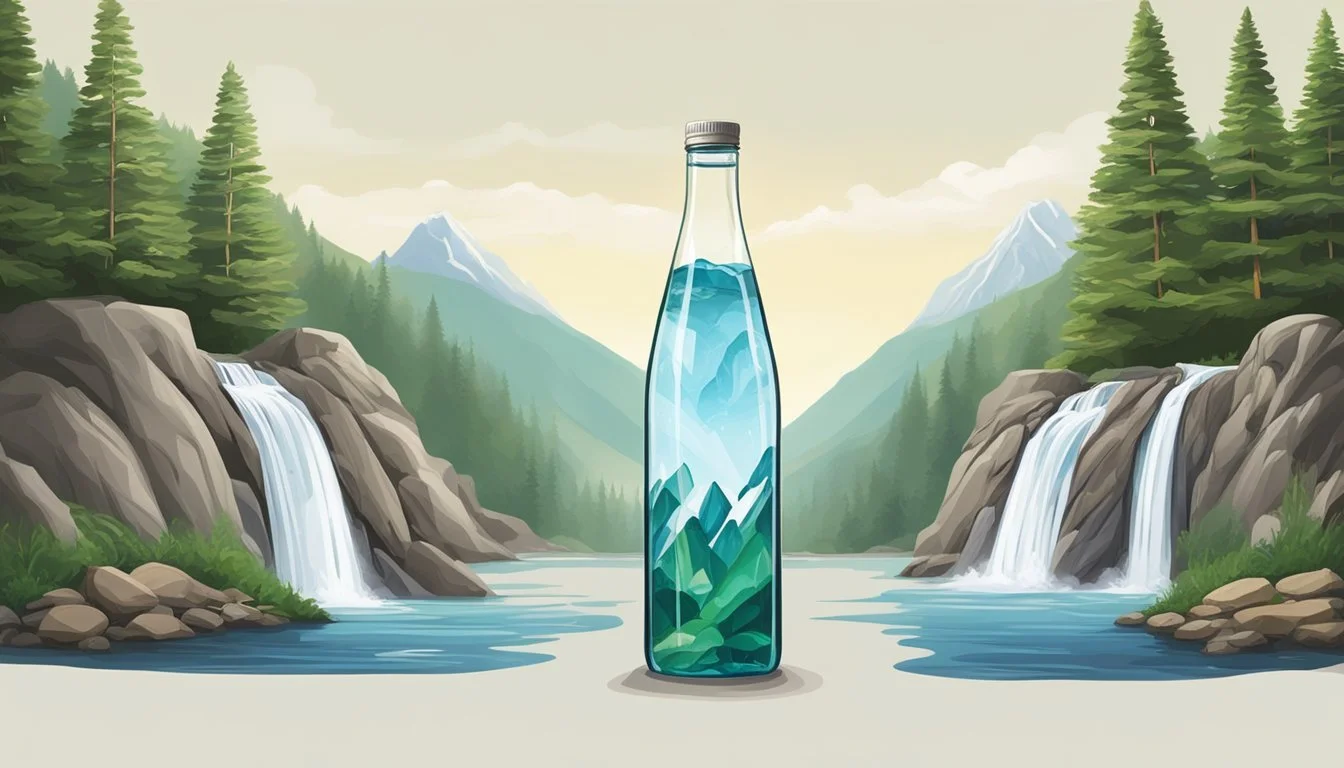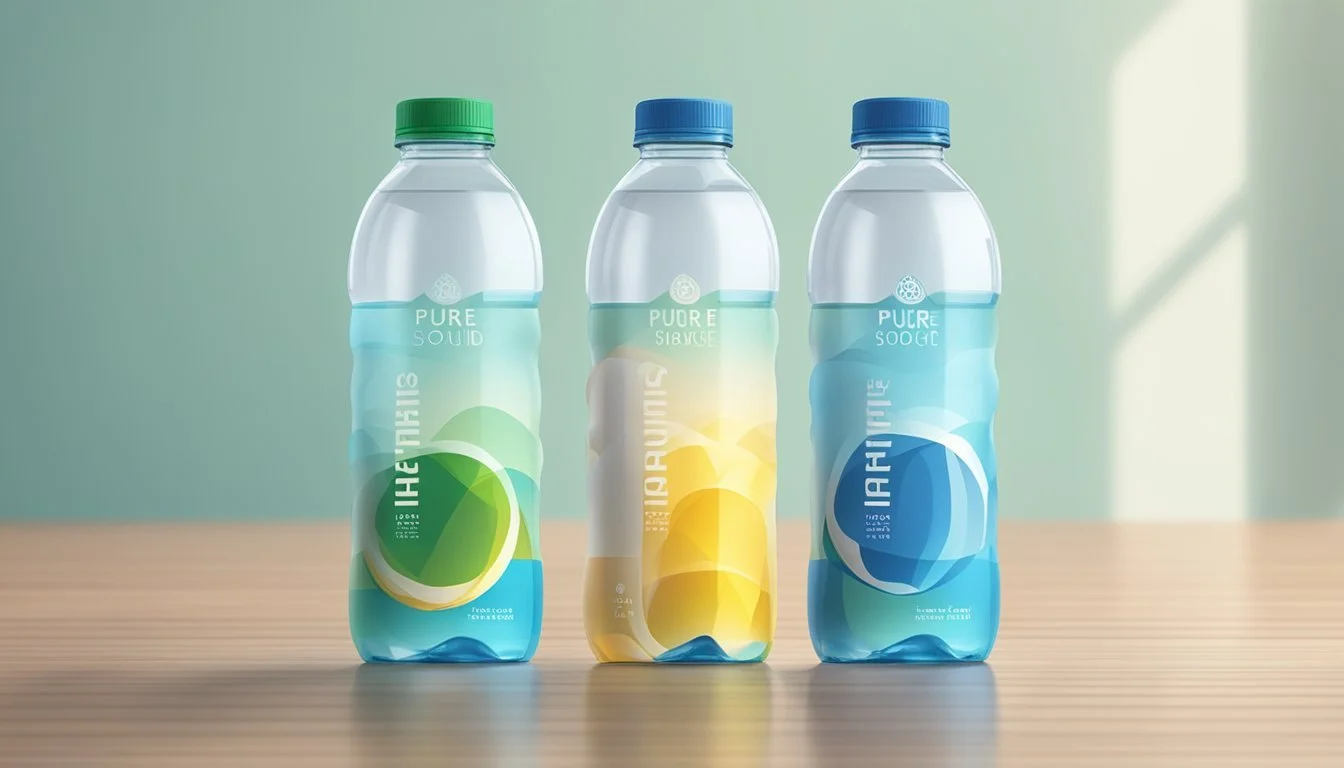Pure Life vs. Proud Source
Comparing Bottled Water Quality
Choosing the right bottled water can be tricky with so many options available. Two popular choices, Pure Life and Proud Source, stand out for their distinct characteristics and origins. Proud Source offers a premium product sourced from natural springs, providing a clean and refreshing taste that appeals to those seeking quality and sustainability.
Pure Life, on the other hand, is widely known for its affordability and accessibility. Despite its more budget-friendly price, some consumers feel it doesn't quite measure up to higher-end brands in terms of taste and purity. This comparison between Pure Life and Proud Source will explore which bottled water truly deserves a place in your daily routine.
Whether you prioritize taste, source, or price, this side-by-side analysis will help you make an informed decision. Dive into specifics about water quality, sourcing practices, and consumer feedback to discover which brand aligns best with your needs and preferences.
Overview of Bottled Water Brands
Nestlé Pure Life and Proud Source are prominent bottled water brands known for their unique sourcing and production processes. Both offer distinct benefits that cater to different preferences and needs.
Understanding Pure Life
Nestlé Pure Life is a globally recognized bottled water brand, noted for its extensive distillation process and robust quality assurance. The brand emphasizes purity and safety in its products, making it a popular choice for consumers seeking reliable hydration.
Nestlé sources its water from multiple locations and subjects it to thorough filtration. This multi-step purification includes reverse osmosis, ensuring the removal of impurities and contaminants. The aim is to provide clean, safe drinking water.
The brand is often marketed in large quantities, which can help reduce the cost per bottle. This makes it an economical option for households and offices. Nestlé positions Pure Life as a cost-effective, high-quality hydration solution.
Exploring Proud Source
Proud Source differentiates itself with a focus on naturally alkaline water sourced from America’s Rocky Mountains. The brand prides itself on sustainability, utilizing aluminum bottles that are recyclable and eco-friendly.
The water from Proud Source has an alkaline pH of 8.1, which appeals to those who prefer alkaline water for its purported health benefits. This natural alkalinity is achieved without artificial additives, preserving the water's natural properties.
Proud Source highlights transparency in its sourcing and bottling, often emphasizing the pristine environment of its source. This approach appeals to environmentally conscious consumers who value sustainable practices and natural quality.
Proud Source offers a premium product that aligns with higher environmental standards, making it a preferred choice for eco-conscious individuals.
Source Comparison
Understanding where bottled water comes from is crucial. This section looks at the sourcing methods, aquifer quality, and natural spring water origins of Pure Life and Proud Source.
Sourcing Methods
Pure Life sources its water from multiple locations, including both springs and municipal supplies. This flexibility in sourcing helps them meet large-scale demand but raises questions about consistency.
Proud Source, on the other hand, exclusively uses natural springs for its water. This focused approach ensures a uniform quality but could limit availability during dry periods.
The differing sourcing methods indicate Pure Life’s reliance on a mixed approach, whereas Proud Source opts for purity from specific springs.
Aquifer Quality and Purity
The quality of water from aquifers can vary significantly. Pure Life utilizes aquifers that meet local regulatory standards. However, the variability in locations may result in inconsistencies in mineral content and purity.
Proud Source bottles its water directly from high-quality aquifers located in the Rocky Mountains. These aquifers are known for their exceptional purity and mineral balance.
By choosing aquifers carefully, Proud Source ensures its water's purity and consistency, contrasting with Pure Life’s more variable sources.
Natural Spring Water Origins
Natural spring water is a key selling point for many bottled water brands. Pure Life incorporates spring water but supplements it with other sources as well. Their spring water may come from various locations, leading to a mix in taste and mineral content.
Proud Source's water is exclusively bottled at the source in Idaho’s Lost River Range. This guarantees a consistent taste and mineral profile synonymous with its brand.
The exclusive origin of Proud Source offers reliability in quality and taste, while Pure Life's mixed sourcing might lead to variations.
Health and Hydration
An in-depth comparison of Pure Life and Proud Source shows significant aspects of hydration, electrolyte content, minerals, and safety standards. This section examines how these factors contribute to their health benefits and quality.
Hydration and Electrolyte Content
Pure Life is enhanced with a light blend of minerals, including electrolytes like sodium and potassium. These electrolytes are crucial for maintaining fluid balance and nerve function.
Proud Source, on the other hand, provides natural electrolytes but typically in lower concentrations. Both brands effectively aid hydration, though Pure Life's added minerals may offer a slight edge in electrolyte replenishment.
Minerals and Health Benefits
Minerals like calcium, magnesium, and potassium play essential roles in overall health. Pure Life contains a balanced mix of added minerals, enhancing its taste and contributing to daily mineral intake.
Proud Source, sourced from natural springs, contains naturally occurring minerals, which can benefit overall well-being.
Though the mineral content may vary slightly between batches, its natural origin is attractive to those seeking unaltered water sources.
Safety Standards and Regulations
Both Pure Life and Proud Source adhere to stringent safety standards. Pure Life, a product of Nestlé, complies with FDA regulations and undergoes multiple quality checks.
Proud Source also meets FDA requirements and is committed to sustainable practices. Regular third-party testing ensures both brands maintain high safety and quality standards, providing consumers with safe drinking options.
Taste Profile and Quality
When evaluating Pure Life and Proud Source bottled waters, it's essential to consider their distinctive taste factors, mineral content, and water quality assurance. Each brand offers unique qualities that cater to different preferences and needs.
Distinctive Taste Factors
Pure Life boasts a taste enhanced by the addition of minerals. These electrolytes provide a balanced flavor that appeals to a wide audience. The enhancement results in a slightly crisp, refreshing profile.
Proud Source, on the other hand, is natural spring water. It has a clean, neutral taste, with subtle mineral undertones. This natural approach appeals to those who prefer a more organic tasting experience.
Both brands ensure their water presents a satisfying hydration experience, free from any artificial flavors or contaminants.
Mineral Content and Taste
Pure Life:
Enhanced with a blend of sodium and potassium.
These minerals contribute to electrolyte balance and a mildly crisp taste.
Artificially enhanced to meet taste standards.
Proud Source:
Contains naturally occurring minerals like magnesium and calcium.
Resulting in a subtle, earthy flavor profile.
Natural spring source provides purity with minimal processing.
The mineral content in each brand influences the water’s taste. Pure Life offers a taste tailored by added minerals, whereas Proud Source maintains its natural integrity.
Water Quality Assurance
Pure Life undergoes rigorous quality checks to ensure safety and taste consistency. It employs advanced filtration methods and regular testing to remove contaminants.
Proud Source also adheres to strict standards, focusing on the purity of its natural spring source. Minimal processing retains the water's natural mineral content.
Both brands are committed to providing high-quality, contaminant-free bottled water. They meet stringent safety regulations, offering consumers confidence in the purity and quality of their hydration choice.
Environmental and Sustainability Considerations
Examining the environmental impact of bottled water involves looking at the production and recycling of bottles, the sourcing of the water, and the sustainability practices of each brand. Each area has significant implications for the environment and the overall sustainability of the product.
Bottle Production and Recycling
Both Pure Life and Proud Source use varying types of packaging, influencing their environmental footprints.
Pure Life predominantly uses plastic bottles, which are ubiquitous but also contribute heavily to plastic waste. Recycling rates for plastic are relatively low, though the brand has initiatives to improve this. Efforts include using a higher percentage of recycled plastic in their bottles.
Proud Source utilizes aluminum bottles, which are more easily recyclable compared to plastic. Aluminum has a higher recycling rate and can be recycled indefinitely without losing quality. This positions Proud Source as a leader in sustainable packaging options.
Environmental Impact of Water Sourcing
The sourcing of water for these brands also has distinct environmental implications.
Pure Life sources its water from various locations around the world. This extensive sourcing network can lead to significant environmental impacts, including water depletion and local ecosystem disruption. Moreover, transporting water over long distances increases the carbon footprint of the brand.
Proud Source, which markets its water as being sourced from natural springs in the United States, claims a more localized approach. This potentially reduces the environmental impact associated with transporting water. However, large-scale extraction from springs can still affect local water tables and ecosystems.
Sustainability Practices of Brands
Sustainability is a core consideration for many bottled water companies.
Pure Life is working towards improving its sustainability by reducing its plastic use and increasing the recycled content of its bottles. The company has also set targets for reducing its carbon footprint throughout its operations.
Proud Source, with its commitment to using aluminum packaging, emphasizes a circular economy approach. This means their focus is on producing packaging that can be continually recycled, reducing the need for virgin materials. Proud Source also promotes transparency in its sourcing and production practices, aiming to build consumer trust in its sustainability efforts.
In summary, Pure Life and Proud Source have different approaches to addressing environmental and sustainability concerns, each with its strengths and areas for improvement.
Filtration and Purification Processes
When comparing Pure Life and Proud Source bottled waters, the filtration and purification methods they employ play a crucial role in determining the taste and quality of the final product. Understanding these processes helps consumers make informed decisions based on their specific preferences and concerns about water purity.
Reverse Osmosis and Distillation
Reverse osmosis and distillation are two key processes in producing purified water.
Pure Life employs a 12-step filtration process which includes reverse osmosis. Reverse osmosis effectively removes contaminants by pushing water through a semi-permeable membrane, ensuring a high level of purity.
Proud Source, in contrast, primarily uses natural spring filtration without reverse osmosis. They rely on the earth’s natural filtration to purify the water. This method maintains the water's natural minerals, catering to consumers seeking a more mineral-rich water option.
Distillation is another technique that some bottled water brands may use, though not explicitly mentioned for Pure Life or Proud Source. This process involves boiling water and condensing the steam back into liquid, leaving impurities behind. While effective, it generally removes all minerals, which can affect taste and beneficial content.
Comparing Filtration Techniques
Pure Life focuses on achieving purified water through advanced, multi-step filtration.
Their process also includes treating the water with UV light and carbon filtration to ensure it meets stringent quality standards. The addition of minerals post-filtration is intended to improve taste, appealing to consumers who prefer a consistent, crisp flavor.
Proud Source emphasizes the natural aspect of its product. The brand's water is sourced from sustainable springs and filtered through natural geological formations. This technique retains naturally occurring minerals, offering a unique taste profile and potential health benefits from the preserved minerals.
When deciding between these two brands, consider whether you prioritize a highly purified water experience or a naturally sourced mineral-rich water. The choice depends on personal taste preferences and health considerations related to mineral intake.
Packaging and Convenience
Both Pure Life and Proud Source offer unique advantages concerning their packaging materials and ease of use for consumers looking for practicality and eco-friendliness.
Types of Bottles and Materials
Pure Life primarily uses PET plastic bottles, a choice known for being lightweight, durable, and cost-effective. However, concerns over environmental impact and BPA content frequently arise with plastic bottles. Despite these concerns, PET plastics are recyclable, though rates of recycling vary.
Proud Source, in contrast, opts for aluminum bottles, which are more sustainable and easy to recycle. Aluminum's non-reactive nature ensures that no contaminants leach into the water, maintaining purity. These aluminum bottles are marketed as a stylish, eco-conscious alternative to traditional plastic.
Convenience Factor
Pure Life’s plastic bottles are ubiquitous and offer a practical solution for those needing hydration on the go. Their lightweight nature makes them ideal for transport, and availability in various sizes caters to different needs and situations. Pricing for these plastic bottles is also very competitive, making them a budget-friendly option for consumers.
On the other hand, Proud Source’s aluminum bottles, though slightly less portable due to their weight, offer a resealable design that is durable and suitable for reuse. This feature makes them highly convenient for environmentally conscious consumers who prefer to avoid single-use plastics.
Both brands excel in different aspects of packaging and convenience, meeting diverse consumer preferences and needs.
Comparison of Additional Factors
When deciding between Pure Life and Proud Source bottled water, it's crucial to consider various elements beyond taste and source. Factors like pricing and brand credibility can significantly influence your choice.
Cost and Affordability
Pure Life tends to be more affordable than Proud Source. Pure Life offers various pack sizes, catering to budget-conscious consumers. This affordability makes it accessible for everyday hydration needs.
Proud Source, on the other hand, positions itself as a premium brand. This often translates to higher prices, reflecting the brand's focus on sustainable practices and eco-friendly packaging. For those who prioritize environmental impact, this cost might be justified.
Brand Affordability Typical Cost per Pack Pure Life More Affordable $5-$7 per 24-pack Proud Source Less Affordable $15-$20 per 12-pack
Brand Reputation and Trust
Pure Life is produced by Nestlé, a well-known conglomerate with a long history in the beverage market. This long-standing presence has built trust among consumers, though some concerns about Nestlé's environmental practices exist.
Proud Source markets itself on transparency and sustainability. It sources water responsibly and utilizes aluminum packaging to reduce plastic waste. This commitment has fostered trust among environmentally conscious consumers.
Both brands carry a level of credibility, but their reputation can appeal to different segments of the market based on individual priorities.
More About Pure Life
Cascade Mountain vs Pure Life: Which Bottled Water is Better?
Hawaii Volcanic vs Pure Life: Which Bottled Water is Better?
Hawaiian Springs vs Pure Life: Which Bottled Water is Better?
Icelandic Glacial vs Pure Life: Which Bottled Water is Better?
Nestle Pure Life vs Pure Life: Which Bottled Water is Better?
Pure Life vs Kirkland Signature: Which Bottled Water is Better?
Pure Life vs Whole Foods 365: Which Bottled Water is Better?
Richard's Rainwater vs Pure Life: Which Bottled Water is Better?
Solan de Cabras vs Pure Life: Which Bottled Water is Better?
Talking Rain AQA vs Pure Life: Which Bottled Water is Better?
Whole Foods Italian Still Mineral water vs Pure Life: Which Bottled Water is Better?
More About Proud Source
Aqua Carpatica vs Proud Source: Which Bottled Water is Better?
Cascade Mountain vs Proud Source: Which Bottled Water is Better?
Core Hydration vs Proud Source: Which Bottled Water is Better?
Crystal Geyser vs Proud Source: Which Bottled Water is Better?
Crystal Lake vs Proud Source: Which Bottled Water is Better?
Hawaii Volcanic vs Proud Source: Which Bottled Water is Better?
Hawaiian Springs vs Proud Source: Which Bottled Water is Better?
Ice Mountain vs Proud Source: Which Bottled Water is Better?
Icelandic Glacial vs Proud Source: Which Bottled Water is Better?
Kirkland Signature vs Proud Source: Which Bottled Water is Better?
Liquid Death vs Proud Source: Which Bottled Water is Better?
Mountain Valley Spring Water vs Proud Source: Which Bottled Water is Better?
Nestle Pure Life vs Proud Source: Which Bottled Water is Better?
Poland Spring vs Proud Source: Which Bottled Water is Better?
Proud Source vs Essence pH10: Which Bottled Water is Better?
Purely Sedona vs Proud Source: Which Bottled Water is Better?
Richard's Rainwater vs Proud Source: Which Bottled Water is Better?
San Pellegrino vs Proud Source: Which Bottled Water is Better?
Simple Truth vs Proud Source: Which Bottled Water is Better?
Solan de Cabras vs Proud Source: Which Bottled Water is Better?
Talking Rain AQA vs Proud Source: Which Bottled Water is Better?
Whole Foods 365 vs Proud Source: Which Bottled Water is Better?
Whole Foods Italian Still Mineral water vs Proud Source: Which Bottled Water is Better?






